The results of the measurement campaigns show how important urban green spaces are for the provision of the cooling function as a regulating ecosystem service — even under heat and drought conditions.
Assessing the cooling function of urban parks under heat and drought conditions
Thanks to the cooling function of the vegetation, urban parks offer cool, pleasant places in cities during hot summer days. Urban parks are also places for recreation and social interaction. In parks, people go jogging or cycling, meet friends, or relax during their lunch breaks (Nadja Kabisch et al. 2021).
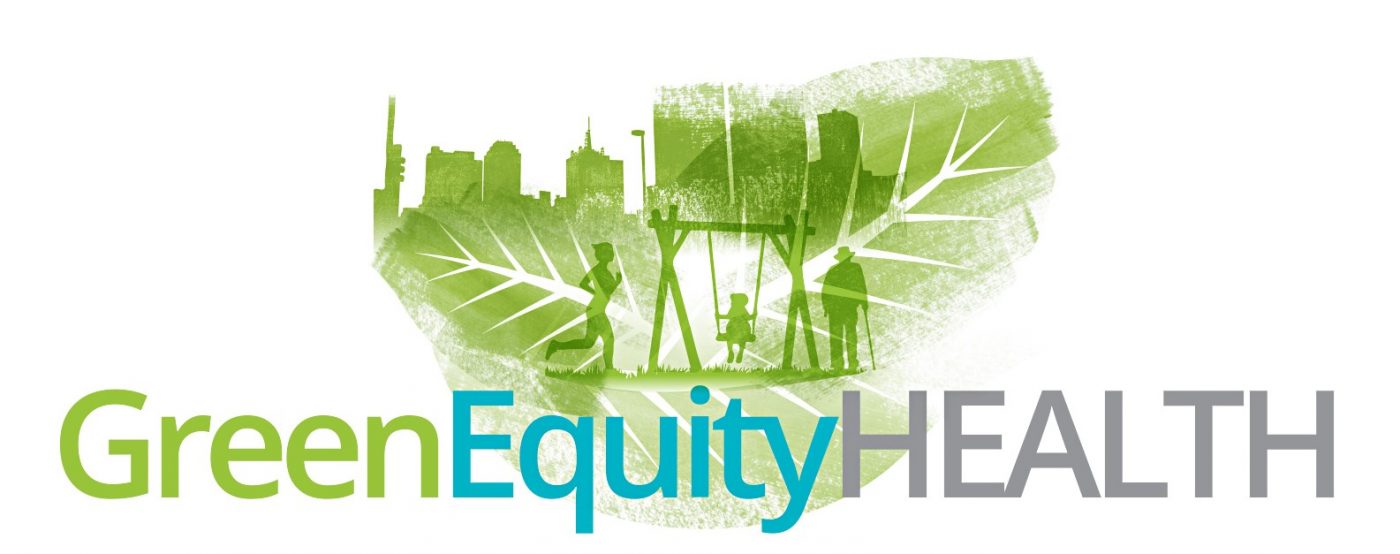
The interdisciplinary research project GreenEquityHealth (www.greenequityhealth.hu-berlin.de) investigated the cooling and recreation function of urban parks under extreme heat and drought conditions in the city of Leipzig. Leipzig, like most Central European cities, was affected by severe heat and dry periods in 2018 and 2019. The annual mean air temperature of the city increased by 2.5°C in both years, and the total annual precipitation was reduced by about 34 percent in 2018 and by 22 percent in 2019 (Stadt Leipzig 2022).
In July 2018 and June 2019, a one-week measurement campaign was carried out in two inner-city parks in the city of Leipzig. The aim was to create empirical evidence on the cooling function of urban parks under severe heat and drought conditions. Two structurally distinct parks close to the city center were selected for the campaign: the Friedenspark and the Lene-Voigt-Park. The Friedenspark, which was used as a cemetery until the 1970s, is an urban park of about 17 ha with extensive lawns and a dense stand of large, old trees. The Lene-Voigt-Park, on the other hand, is a newly created park developed in the early 2000s on a former railway brownfield site. The former railway station and the track structures can still be recognized today in the ruins of some buildings and in the elongated shape of the park with its approx. 9 ha size. Large, open lawns predominate here, with tree plantings and larger rows of trees in the side areas.
Figure 1 shows photos that illustrate the drought-induced vegetation degradation and Photo 3 one of the measurement station in the Friedenspark. The one-week measurement campaigns took place from 19 to 25 July 2018 and from 30 June to 6 July 2019 under high temperatures of up to 34°C. Air temperature and humidity were measured at two heights (2m and near ground level) at 17 measuring sites distributed over both parks. Additional measurements were carried out in the adjacent built-up street area.
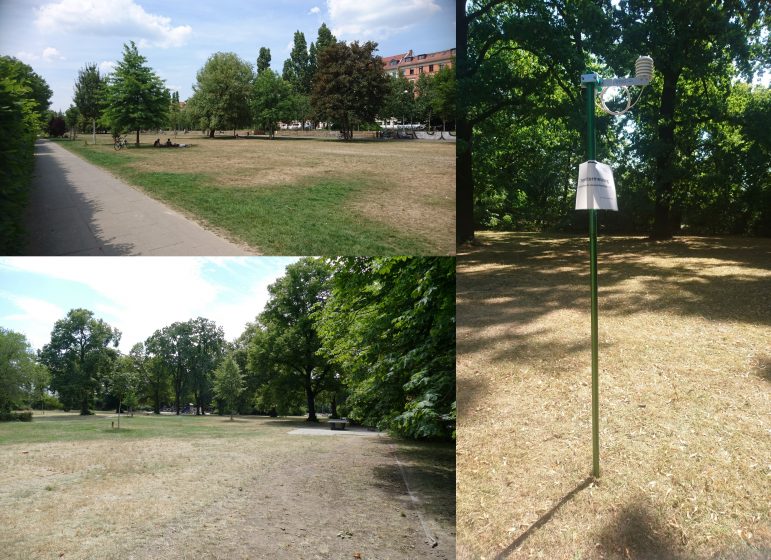
Air temperature and air humidity measurements in mid-July 2018 showed increasing daily maximum air temperatures from around 28°C in Friedenspark on 18 July to around 34°C in Lene-Voigt Park on 25 July, reflecting the gradual heating of the entire urban landscape during the 2018 heatwave. In Lene-Voigt Park, the highest air temperatures of 33.5°C were measured at a height of 2m and even 40°C at ground level. In contrast, lower daily maximum temperatures were recorded in the Friedenspark (up to 28°C at 2m height). Especially during the day, the higher air temperatures in Lene-Voigt Park can be explained by the very open structures with little amount of shade. Due to the dryness that has already prevailed since April 2018 (with below-average precipitation) and the frequented use by park visitors, the ground vegetation in Lene-Voigt Park was also severely damaged and the lawn areas have turned into bare soil areas. In the Friedenspark, too, meadows and many trees were impacted by the drought and heat. However, due to a tree cover of over 60 percent, large areas remained shaded even under these extreme conditions providing cooling. The tree cover in Lene-Voigt Park, on the other hand, is only about 15 percent, which partially reversed the temperature situation in the parks at night. The open areas in Lene-Voigt Park favor a vertical heat flow, which led to a partly stronger cooling during the night in the Lene-Voigt-Park (Kabisch et al. 2020; Kabisch et al. 2021; Kabisch/Kraemer 2020).
In the adjacent residential neighborhoods, a stronger heating of the building fabric is expressed with local temperature differences of up to 2 K compared to adjacent green spaces, especially in the afternoon. Figure 2 shows the result of an area-based modelling of the situation on 30 June 2019, when almost 40°C air temperature was reached at 2 m above ground (Kraemer/Kabisch 2022). Cooling takes place mainly in the green structures in Friedenspark and in the isolated vegetation-covered areas of gardens and backyards (Fig. 2). The strong heating of the open areas in Lene-Voigt Park is also evident here.
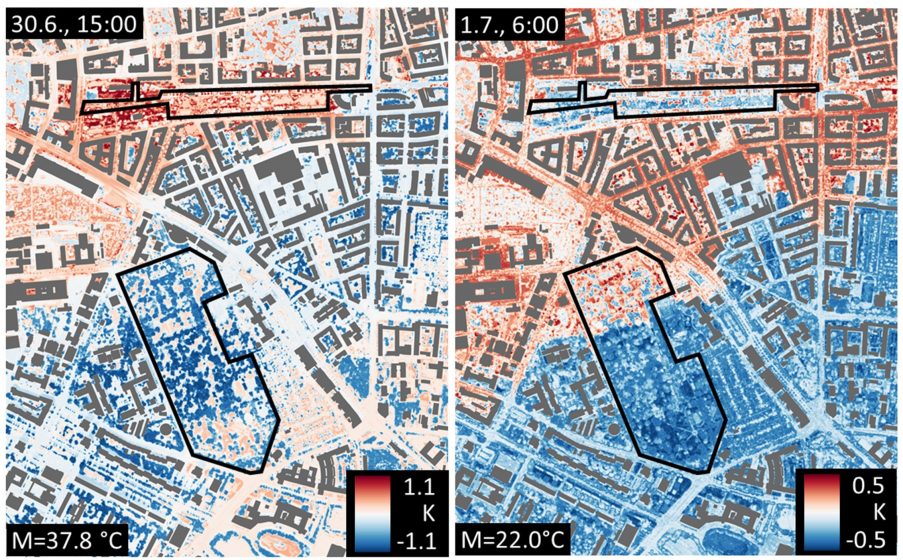
The significance of urban green spaces
The results of the measurement campaigns impressively showed how important urban green spaces are for the provision of the cooling function as a regulating ecosystem service. In particular, urban parks still provide cooling under drought and heat conditions but also the vegetation in gardens or backyards reduce local air temperatures and contribute to heat mitigation. Especially in growing cities, the preservation and further development of urban parks, but also other elements of green infrastructure, is of great importance, particularly under climate change.
Roland Kraemer and Nadja Kabisch
Leipzig and Hannover
about the writer
Nadja Kabisch
Nadja Kabisch holds a PhD in Geography. Her special interest is on human-environment interactions in cities taking co-benefits from nature-based solutions implementation for human health and social justice into account.
Acknowledgement
The project “Environmental-Health Interactions in Cities (GreenEquityHealth, www.greenequityhealth.hu-berlin.de) – Challenges for Human Well-Being under Global Changes” (2017 – 2022) was funded by the Federal Ministry of Education and Research (BMBF; funding code 01LN1705A).
References
Kabisch, N. et al. (2021): A methodological framework for the assessment of regulating and recreational ecosystem services in urban parks under heat and drought conditions. In: Ecosystems and People 17/1, 464–475.
Kabisch, Nadja et al. (2021): Impact of summer heat on urban park visitation, perceived health and ecosystem service appreciation. In: Urban Forestry & Urban Greening 60, 127058.
Kabisch, N. et al. (2020): “Physical activity patterns in two differently characterised urban parks under conditions of summer heat” [Environ. Sci. Policy 107 May (2020) 56–65]. In: Environmental Science & Policy 114, 216.
Kabisch, N. and Kraemer, R. (2020): Physical activity patterns in two differently characterised urban parks under conditions of summer heat. In: Environmental Science & Policy 107, 56–65.
Kraemer, R. and Kabisch, N. (2022): Parks Under Stress: Air Temperature Regulation of Urban Green Spaces Under Conditions of Drought and Summer Heat. In: Frontiers in Environmental Science 10.
Stadt Leipzig (2022): Stadtgebiet und Witterung Stadt Leipzig. https://statistik.leipzig.de/statcity/table.aspx?cat=1&rub=3.


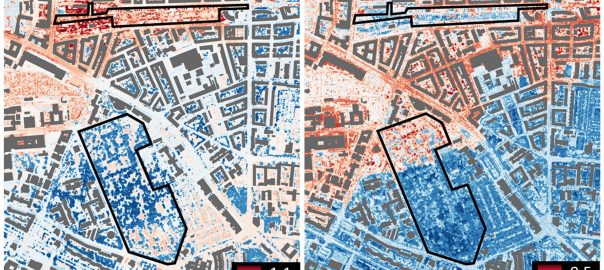
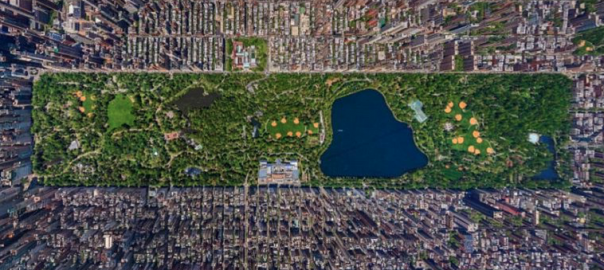
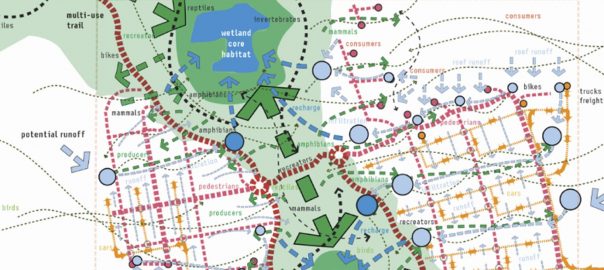
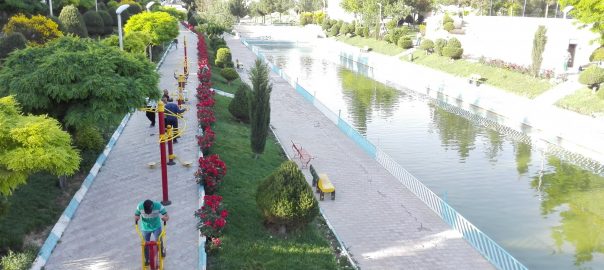

Leave a Reply